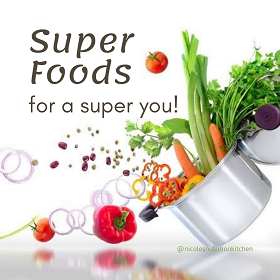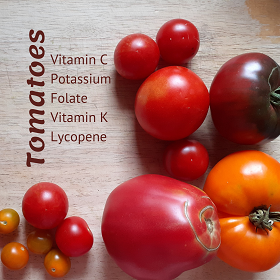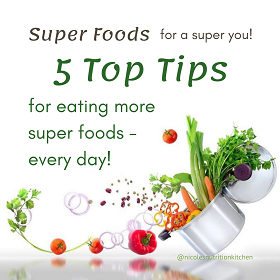
You know how we hear things about some new ‘superfood’ that is going to do all these amazing things for us if we buy it and eat it?
It'll cure everything! So, we desperately need it in our lives.But are super foods really that super?
Oh, by the way, you will need to re-mortgage your house to afford to eat it. And it will likely be out of fashion next week when there is something else new, exciting and exotic.
It can be a bit overwhelming and confusing, as to whether or not these fancy foods are all they’re cracked up to be.
It turns out, that there really is no need to get caught up in the hype of unusual, exotic and expensive ‘superfoods’.
There are simple, everyday foods that pack a just as big (or bigger) health punch for a fraction of the cost. Everyday foods that are packed full of vitamins, minerals, and antioxidants, that are beneficial to our health – that we can afford to eat EVERYDAY!
When it comes down to it with healthy eating, it is what you do every day that has the biggest impact on your health. Your overall ‘eating pattern’ is more important than any individual food you eat, or don’t eat, at any given meal or on any given day.
I’ll be sharing information about wonderful everyday foods that provide you with loads of nutrients, with maybe the odd exotic food thrown in just to inspire you to try something different for a bit of fun.

The SUPER FOOD that I am going to start with is the TOMATO.
Tomatoes are a great source of:
• Vitamin C – an antioxidant that is important for our immune system, it is also involved in the health of our bones, tendons, ligaments and skin; as well as helping us absorb iron.
• Potassium – a mineral that helps maintain healthy blood pressure, nerve impulses, digestion, heart rhythm and water balance.
• Folate – a type of B vitamin it helps us make and repair DNA and is needed for the production of red and white blood cells.
• Vitamin K – essential to help our blood clot properly.
• Lycopene – an antioxidant, which has been shown to have health benefits such as reducing the risk of heart disease and certain types of cancer.
Tomatoes are best when they are at their ripest – bright, juicy and full of colour and flavour. And when it comes to colour, not all tomatoes are red. They can also be yellow, orange, green, and purple; as well as different sizes and shapes.
Towards the end of summer, if like me you are an avid gardener, you may find yourself with more tomatoes than you know what to do with. My trick for using any excess tomatoes is:
1. Chop them up and gently boil, in an uncovered pot, until the liquid has reduced by half.
2. Allow to cool before dividing between 1 cup sized containers to freeze.
3. Take out and thaw as many as you need for a recipe – great to add to stews and sauces, or to make soup – for that taste of summer all through winter.

Here is my next instalment on "super foods"... which in my world are generally budget-friendly, everyday foods.
When it comes to super foods, it not just the nutrients in the food and the impact on our health that is important. There is also the impact on our wallet and the environment. So when finding ways to get more super foods – namely fruits and veg – into your day, it’s worth thinking about more than the nutrients.
Here are my 5 top tips when choosing super foods:
? Buy local – by buying local the produce has travelled less distance to get to you. So, it’s fresher and won’t go off as quickly = less food waste. This is better for your wallet as well as the environment.
? Buy seasonal – not only are fruits and veg tastier when in season, but they are more likely to be locally sourced.
❄️ Buy frozen – sometimes frozen is the better option, such as in-between seasonal times when the fresh options don’t offer much variety. But still try to buy local products if you can find them.
? Buy tinned – again this is a great way to add some variety, but also convenience. For example, tinned beans, such as kidney beans or chickpeas, add a big nutrient burst but take ages to cook from dried but are quickly added to a meal from a tin.
? Buy what fits your budget – whether that be fresh or frozen, organic or conventionally grown, exotic or the everyday; the important thing is to aim for 5+ serves of veg per day and 2-3 serves of fruit, however that works for you. And don't forget that these tips can also apply to other food groups, such as seafood (tinned or frozen can be cheaper than fresh).
Keep checking in to read more of my “Super foods for a super you – EVERYDAY!”
